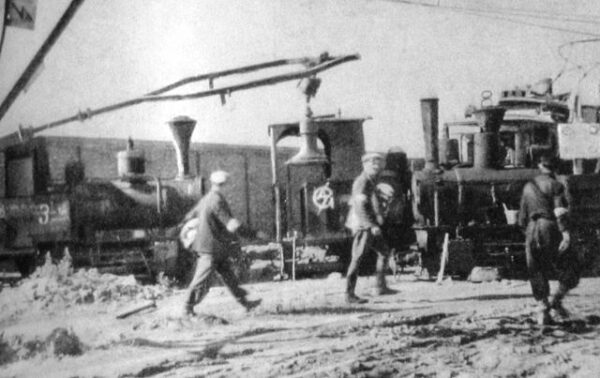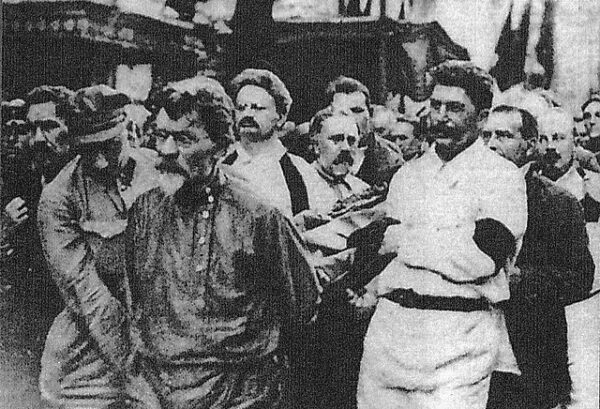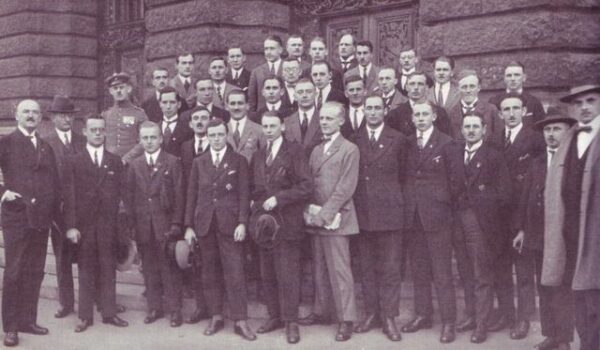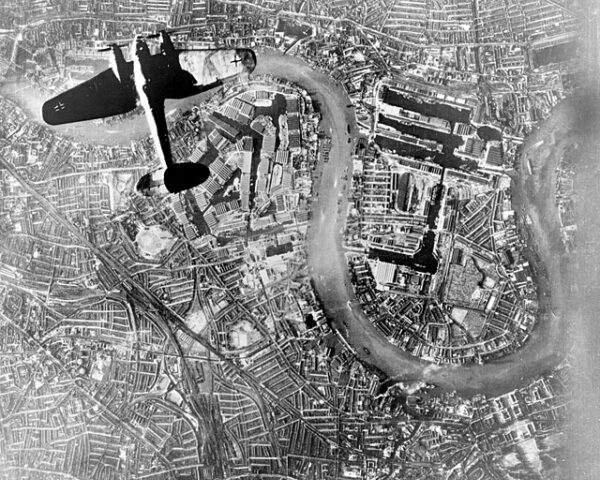August 1, 1944, saw one of the largest urban uprisings of World War II. Since the beginning of the war and the joint Nazi-Soviet invasion of Poland in 1939, the Polish government had existed in exile in London.
By the summer of 1944, with the Allies slowly winning the war in Europe, the Polish people believed they had an opportunity to take back their country, starting with their beloved city of Warsaw. The insurgents’ objective was to liberate the capital from German occupation before the Soviet army’s arrival, securing Poland’s sovereignty after the war’s conclusion.
“Inside occupied Poland, anti-Nazi resistance was consolidated around the Home Army (Armia Krajowa, in Polish), an underground military organization loyal to the Free Polish government in London, which at its peak in mid-1944 included more than 300,000 soldiers. The Home Army was involved in sabotage, self-defense, and retaliation activities against the Germans. It also provided a great service to the Allies in the area of intelligence, obtaining information on German forces in the east and on the development of Germany’s secret V-1 and V-2 rockets. But the primary purpose of the Home Army was to prepare for the anticipated German military collapse and the liberation of the country,” according to The Hoover Institution.
Although they had the numbers, the Polish home army needed more proper weaponry to face a fully-militarized German army. Without the anticipated support from the Allies–The Russians were mere miles away from Warsaw–their chances of victory were slim.
What happened next changed Eastern Europe forever.
“The uprising was expected to last about a week and was seen largely as a “mopping-up” operation, continues Hoover. “This turned out to be a miscalculation. The Germans decided to make a stand and defend “fortress” Warsaw as the Soviets halted their offensive. The uprising lasted not one but nine weeks, turning into the longest and bloodiest urban insurgency of the Second World War. Despite an initial success in liberating most of the city from the Germans, the tide soon turned against the Home Army. The strength of the two sides was disproportionately in favor of the Germans. The Home Army had at its disposal about 40,000 fighters—including 4,000 women—but no more than 10 percent of them were armed, mostly with light weapons. The Germans had roughly the same number of soldiers, but they were heavily armed, with tanks, artillery, and planes.”
The fate of Warsaw, once known as the ‘Paris of the East,’ was sealed by Heinrich Himmler’s chilling order: “Every inhabitant must be killed, no prisoners are allowed, Warsaw is to be razed to the ground, and thus, an intimidating example for the whole of Europe is to be created.” This ruthless directive ensured a devastating fate for the city, leading to widespread destruction and loss of life.
“The civilian population suffered the most. On August 5–6 alone more than 40,000 inhabitants of the district of Wola—men, women, and children—were slaughtered. The mass killing was the work of the SS, police, penal battalions, and units of the Russian People’s Liberation Army, made up mostly of Russian collaborators. Altogether, the Polish losses during the uprising included 150,000 civilian dead and about 20,000 Home Army casualties. The German forces lost about 10,000. Fighting ceased on October 2 with the formal capitulation of the Home Army forces. The remaining civilian population of 650,000 was deported to a camp south of Warsaw. During the next three months, the Germans proceeded to demolish much of what was left of the city; when the Soviet troops “liberated” Warsaw in January 1945, Poland’s capital was a vast desert of hollow-shelled buildings and rubble, writes historian Maciej Siekierski.
“The Warsaw Uprising failed because of lack of support from the Soviets and British and American unwillingness to demand that Stalin extend assistance to their Polish ally. The Soviet advance in Poland stopped on the Vistula River, within sight of fighting Warsaw. Stalin had broken off diplomatic relations with the Polish government in exile when, in the spring of 1943, it asked the International Red Cross to investigate the killing of thousands of Polish officers at Katyn. The Polish officers were prisoners of the Soviets following its 1939 invasion of Poland in collaboration with Hitler. The Soviets tried to pin the blame on the Germans and did not admit the April 1940 summary executions of at least 21,000 Polish prisoners until some 50 years after the fact.”
The National WWII Museum explains why Stalin let the Polish be obliterated. The Russian leader’s “initial approach to the uprising was to proceed with caution. Rokossovsky’s forces stood little chance of crossing the Vistula within the first two or three weeks of August, and lack of communication proved to be a significant problem. Neither the British nor the Soviets had intelligence officers in Warsaw and, even though Rokossovsky’s forces were only a few miles outside of the Polish capital, there was no way to communicate with them except by radio via London or Moscow.
In Stalin’s mind there was no harm in proceeding carefully. If the Germans were able to crush the AK revolt, Soviet troops could easily liberate the city by the end of August. This would effectively secure Poland within the Soviet sphere of influence, since Stalin already had a governmental body ready to assume control.”
Even worse, when Britain and the United States tried to airdrop supplies to the Poles, Stalin refused to allow Allied planes to land in Russia.
The WWII Museum notes that on August 18 the Soviets “prohibited American bombers from landing at the Poltava air base in Ukraine if the mission was to provide supplies to Warsaw. In order “to avoid the possibility of any misunderstanding” on this point, the Soviet Deputy Commissar for Foreign Affairs, M. Vyshinksy read a prepared statement to the US Ambassador in Moscow stating:
‘The Soviet Government cannot of course object to English or American aircraft dropping arms in the region of Warsaw, since this is an American and British affair. But they decidedly object to British or American planes, after dropping arms in the region of Warsaw, landing on Soviet territory, since the Soviet Government do not [sic] wish to associate themselves either directly or indirectly with the adventure in Warsaw.’
The ban particularly outraged Churchill, who later called it “an episode of profound and far-reaching gravity.” Churchill sent several appeals to Stalin to allow Allied planes to use Soviet-controlled airfields, but Stalin repeatedly refused. In one instance, when a British plane landed on a Soviet-controlled airfield, Soviet forces interned the crew until the British embassy in Moscow intervened on their behalf.”
The Warsaw Uprising of 1944 served as one of the most pivotal moments in the history of Poland and today their defeat is remembered as a great national tragedy. While tens of thousands of Poles died trying to liberate their nation from the Nazis without the help of their supposed Russian allies, the spirt of the insurgency lived on.
In the 1980s, remembering the spirit of the uprising, Poland again stood up to an occupying force under the name of the Solidarity Movement: this time the Soviet Union, but that will come on another date






